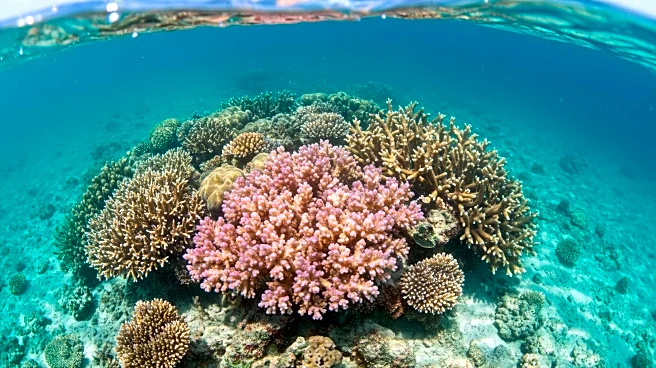What's Happening?
Western Australia has experienced its longest and most intense marine heatwave, resulting in severe coral bleaching across a 1,500km stretch. The heatwave, which began in August 2024, affected reefs from Ningaloo to Ashmore Reef, causing significant heat stress in corals until May 2025. According to Dr. James Gilmour from the Australian Institute of Marine Science, more than 90% of corals on some inspected reefs have either bleached or died. The event coincided with a global bleaching event affecting over 80% of the planet's reefs. Scientists attribute the heatwave to climate change, noting the absence of La Niña patterns that typically contribute to such events.
Why It's Important?
The coral bleaching in Western Australia highlights the vulnerability of coral reefs to climate change. Coral reefs are crucial ecosystems supporting fisheries and tourism industries that feed and employ millions globally. The increasing frequency and intensity of bleaching events threaten the survival of these ecosystems, which require 10 to 15 years to recover fully. The situation underscores the urgent need to reduce greenhouse gas emissions to mitigate climate change impacts and preserve coral reefs.
What's Next?
Scientists and marine managers are convening in Perth to discuss the implications of the heatwave and explore strategies to protect coral reefs. The focus will likely be on reducing emissions and enhancing reef resilience. Continued monitoring and research are essential to understand the long-term effects of climate change on marine ecosystems and develop effective conservation measures.
Beyond the Headlines
The event raises ethical and environmental concerns about human responsibility in climate change. It prompts discussions on sustainable practices and policies to protect vulnerable ecosystems. The loss of coral reefs could lead to significant biodiversity loss and impact cultural heritage associated with marine environments.











